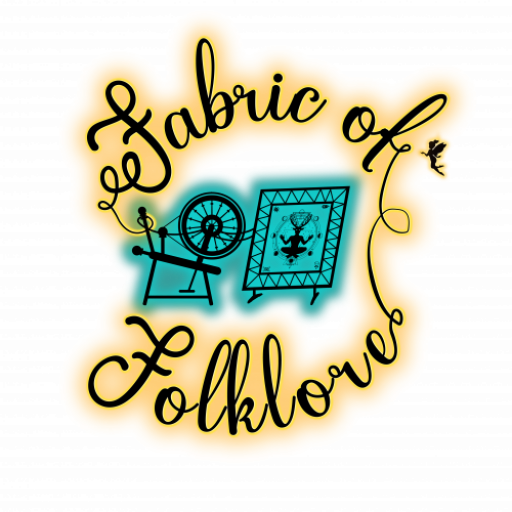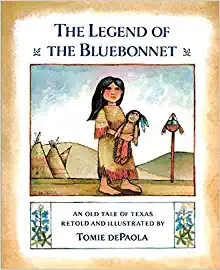Audio Version
I am a born and raised Texas girl. If you have spent any significant amount of time in Texas, you know that bluebonnet season is one of the most anticipated times of the year. Springtime in Texas is stunning with the highways, parks and fields blanketed in blue with the beautiful wildflower. It is nothing short of magical and therefore should come as no surprise that folktales about these beautiful blossoms are as abundant as the flowers themselves.
The Legend of the Bluebonnet is written by Tomie dePaola, an award-winning writer and illustrator who was well-known for bringing folklore from around the world to life for children. It is a retelling of a Comanche tale about the origin of the flowers.
Spoiler Alert!
I highly recommend reading the story first but here is a brief summary of the tale;
A young girl’s parents perish due to the great famine her people are experiencing. The land, animals and people are desperate for the life-giving rain, but the drought threatens to continue killing the animals they hunt and the plants they forage. The shaman returns from his commune with the Great Spirits, and tells the people that in order for there to be rain, sacrifice needs to be made. The people nod their heads and agree, but then each individually convinces themself that their precious item is not what the Great Spirits meant and assume someone else will make the sacrifice. The young girl however, takes the responsibility that no one else is willing to take. She sacrifices her most precious item; a doll, made by her deceased parents with blue jay feathers in its hair. It is all that she has left of them but she loves her people. And with her sacrifice, the Great Spirits give the people rain, and with the rain, a gift of bluebonnets, the color of the feathers of her doll.
This story is well-known and very cherished in the state of Texas. Such a touching and memorable tale makes a strong impression. As this is the very first folktale I can recall, I can say that, for me personally, it was incredibly formative in my upbringing. The example of the little girl having the courage to give up what was most important to her for the sake of those she loved, had a profound and lasting influence on my development. Even just typing out this shortened version of folktale, I feel a tightening in my chest, reminding me of the importance of being self-sacrificing. This story resonates with me deeply. I too, like the other tribe members, hold too tightly to my earthly possessions. It is easy for us to get so caught up in our “things”, that we forget to hold tight to what is really important; our community, and the people we love. It is an important lesson, and one that we sadly seem to need reminding of again, and again.
This is why folklore is important. It is a reminder of what we, as people, hold dear. Folktales have the power to be impactful at any stage in life, for those whose hearts are open to them. I hope that with this podcast, as we continue to explore the impact folklore has had and continues to have, the power of folktales will live on.

